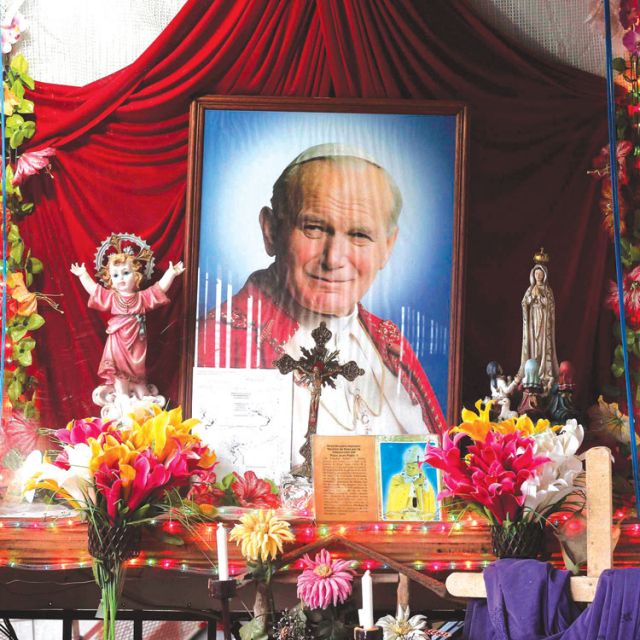But in considering the double canonization of Pope John XXIII and Pope John Paul II it is important to remember it’s not the office of the papacy or their Church careers that are being raised to sainthood.
Rather it is the men themselves, said King’s University College theologian Mark Yenson.
“These are two great popes, great historical figures, but I think it refocuses the Church on sanctity,” Yenson said. “(The canonization) is not just about the institutional Church, but it’s about their personal holiness, their devotion to Mary, their prayer, their inspiration.”
On July 5 it was announced that Pope Francis signed a decree for the canonization of Blessed John Paul II and will ask the cardinals to vote on the canonization of Blessed John XXIII, even in the absence of a second miracle. The Pope will convene a consistory after the summer where the cardinals will set a date for the double canonization, probably late this year.
The sainthood cause of John Paul II is proceeding after the Congregation for the Cause of Saints recognized as a miracle the healing of a Costa Rican woman, Floribeth Mora Diaz, who recovered from a brain aneurysm after praying for the intercession of the former pope. No second miracle was verified for John XXIII, pontiff from 1956 to 1963, but Pope Francis invoked a rarely used papal right to dispense with this requirement.
If Pope Francis “had any doubts, we wouldn’t be here,” said Vatican spokesperson Jesuit Father Federico Lombardi. “And I think none of us has any doubts about John XXIII’s virtues.”
All kinds of Canadians recognize the courage and creativity of how Angelo Roncalli and Karol Wojtyla lived their ministry as bishops of Rome.
“We know how close these spiritual shepherds have been to their flock, both in life and in death,” said Toronto’s Cardinal Thomas Collins in a press release.
For the generation that grew up knowing only Pope John Paul II, the double canonization will be a reminder that the man who served as pontiff from 1978 to 2005 spent every day thinking, praying and interpreting the Second Vatican Council.
“For a generation who don’t remember the changes of the council, I think that’s hugely important,” Yenson said.
For the generation that does remember what Pope John XXIII and all that the Second Vatican Council accomplished, it will be a call to re-ignite the energy, hope and spirit of the time, said Jesuit historian Fr. Jacques Monet.
“His impact on the Church, when he called for the council and even before that in his manner and his approach, was very impressive — a change of the idea of what the Pope’s ministry could become,” said Monet.
What the council accomplished for Canada was significant, said Yenson. It helped equip the Canadian Church for the kind of pluralism it faces now and it prepared Canadian Catholics for dialogue with Muslims, Jews, Eastern religions and waves of immigrants which have repopulated the Church and the nation.
Having visited Canada three times, in 1984, 1987 and for World Youth Day in 2002, Pope John Paul II had an intimate connection with Canadians. During his first visit he reached out specifically to native Canadians at a Mass at the Martyrs’ Shrine in Midland, Ont., but a planned trip to visit the Dene people in Fort Simpson, NWT, was abandoned because of fog.
“Sorry, but I invite myself back to Canada,” the Pope told reporters in Ottawa.
He made that one-day trip on Sept. 20, 1987, cementing an extraordinary bond. John Paul II understood that the Catholic Church was evolving from a European Church to a truly global Church, said Yenson. On the shores of the Mackenzie, he “was in a deep sense in continuity with what the Second Vatican Council was looking for.”
The charismatic pope’s extraordinary popularity sometimes seemed divorced from the world’s reception of his teaching, particularly on sexuality and marriage, said Canadian Catholic Bioethics Institute executive director Moira McQueen.
“Everybody loves him,” she said. “(But) when it comes to sexuality, hardly anybody pays attention. It doesn’t make sense at a logical level.”
His catechesis on sexuality was transformed into the theology of the body, with followers across Canada. But his greatest teaching about life may have been how he lived his frail old age. The image of him fighting with Parkinson’s and still giving of himself every day in prayer became an icon.
(With files from CNS.)


